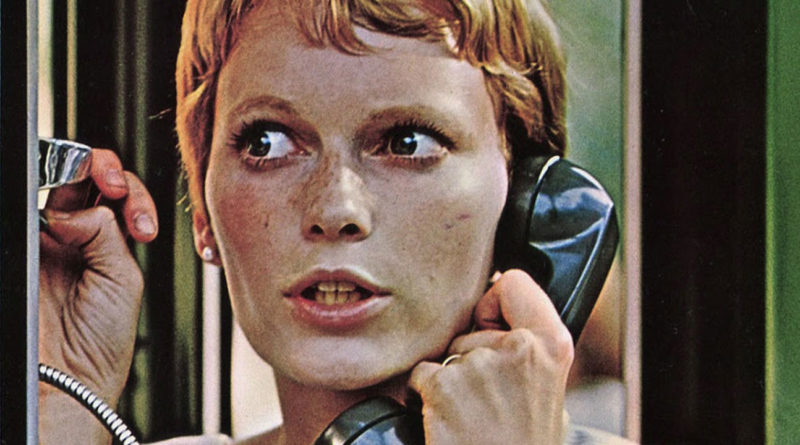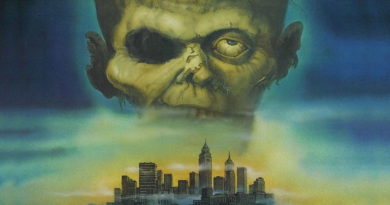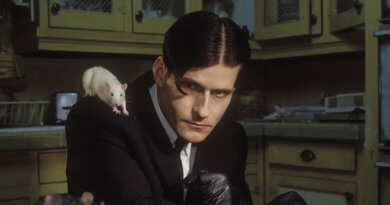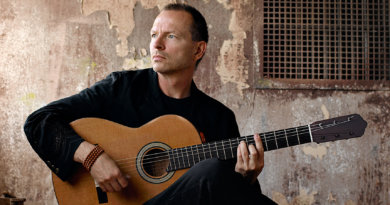Some Classic Horror Movie Scores
An evocative score is such an important element in a film — particularly a horror film. While no score at all can be a nerve-jangling experience (Hitchcock’s The Birds, anyone?), effective music can be as iconic for a classic horror movie as the images themselves. Can you listen to Mike Oldfield’s “Tubular Bells” without visualizing Linda Blair’s head spinning around in The Exorcist? Or catch a few bars of 45 Grave’s “Party Time” and not think of zombies crawling out of the mud in Return of the Living Dead?
Here, in no particular order, is a short list of some scores that I think transcend the ordinary, approaching sublimity and forever providing a sonic shorthand for the films they represent.

1. Rosemary’s Baby and Dance of the Vampires. The worlds of music and cinema were unnecessarily robbed in 1969 when Polish jazz musician and composer Krzysztof Komeda died after an accident in Los Angeles and was improperly cared for. He was only 37 years old. A favorite of Roman Polanski, he provided the memorable music for two of the director’s biggest films.
I have the score of 1968’s Rosemary’s Baby on vinyl and it’s wonderful. Among the highlights: the stuttering trumpet during “Panic,” when Rosemary is trying to escape the clutches of the coven; the sudden rising of the weird recorder music and chanting when Rosemary and Guy are messing around on the floor of their new apartment at the Bramford; and Mia Farrow’s deceptively sunny lullaby that opens and closes this marvelous film.
Komeda is completely up to the task, weaving menace through Manhattan with a score that sounds simultaneously otherworldly and hip.

1967’s Dance of the Vampires (aka The Fearless Vampire Killers) is a different challenge — a period piece and a comedy to boot. Either Komeda was coached by Polanski or was able to sync into his mind via ESP, because he understood that the slapstick humor was merely a cover for something much darker — a story about a vampire dictator lording it over not only his converted disciples but also the terrorized townspeople. It’s no accident that Polanski prominently features a religious Jewish man in the cast whose conversion to vampirism allows him free reign for his lusts.
Again, Komeda rises splendidly to the occasion. His score is chillingly beautiful, as befits the freezing climate in the film. Even during Dance‘s lighter moments, when he brings in a chorus to accompany the musicians, the singers sound….well, dead.
2. Suspiria (1977). Talk about an epoch-making score. I was 17 years old when I saw Argento’s masterpiece at the State-Lake Theater in Chicago and became aware of surround sound in film for the first time. Suspiria was so loud…and the sound of breathing was all around me. So were some strange people snorting things and having sex. And the hissing of the word “Witch!” repeated again and again as the percussion banged away.
Even though it was the Fox International Classics version, tamely edited for an “R” rating (which they’re still running on Fox Movie Channel), I was blown away by the violence…and Goblin’s awesome music.
When I moved to California, I found a brand new vinyl of the soundtrack on Venice Beach for $5.00 in 1981 and it’s still one of my most prized possessions. Witch!
3. Carrie (1976). I love the scores of Pino Donaggio. His career highlights include music for The Howling, Piranha, Dressed to Kill and Don’t Look Now, but I still have to give the career achievement award to his magnum opus — Carrie. It’s lush and string-driven, giving the necessary emotional weight to the spectacular performances by Sissy Spacek and Piper Laurie.

Since religious fanaticism is a major theme in the film, Donaggio’s music is very liturgical, although he does create some light stuff for those silly “mod” scenes that De Palma threw in (hey, it was the ’70s). I have the original score on vinyl that I bought when I was 16…and it still plays great!
4. The Omen (1976). Jerry Goldsmith won the Academy Award for his ferocious score accompanying Richard Donner’s film about the arrival of the Antichrist on earth. Now when I watch the film, Gregory Peck and Lee Remick remind me disturbingly of Ron and Nancy, but Goldsmith’s music is still majestic as ever, taking religious themes and turning them into something far more sinister.
Goldsmith’s celebrated career contained a number of horror highlights — Alien, Poltergeist, Planet of the Apes and Gremlins, to name just a few. And not a horror film, but one of his best, is his jazzy score for Polanski’s 1974 classic Chinatown.
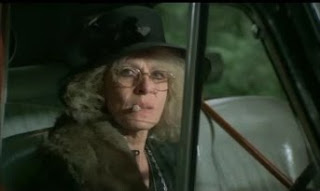
5. Creepshow (1982). John Harrison’s synthesizer score for George Romero’s anthology film is great fun, particularly the main theme with its chanting and sighing singers. Based on stories by Stephen King, it features a screenplay by the author and he even shows up in a story. What a hambone.
But Harrison hits all the right notes (ha!) with his playfully creepy music that fits the film’s comic book images perfectly. And Viveca Lindfors is so hilarious as crazy Aunt Bedelia in “Father’s Day.”
Harrison also did the music for Romero’s company’s syndicated series, Tales from the Darkside and the feature Day of the Dead before moving into directing himself.
6. Psycho (1960). Obviously, endless pages have been written about Bernard Herrmann’s score for Hitchcock’s shock masterpiece, but it belongs here, too.
Herrmann made the daring choice of using strings only for Psycho. In an interview given in 1971, the composer explained that he did so because he felt that he could complement the black-and-white photography of the film by creating a black-and-white sound. And the shrieking, stabbing music accompanying the shower scene almost didn’t happen, because Hitch didn’t want music. However, he was unhappy with the finished product, and Herrmann talked him into providing his famous “scree-scree-scree” cue.
I don’t have the soundtrack album, which wasn’t released in its complete form until 1996, when it was performed by the Scottish National Orchestra, but I do have a cover of the theme song by the Fibonaccis, a Los Angeles art punk band from the early ’80s.
7. Pan’s Labyrinth (2006). Not a horror film in the strictest sense but an extremely dark fantasy, Guillermo Del Toro’s masterwork is graced with a hauntingly beautiful score by Javier Navarrete, who also scored Del Toro’s marvelous 2001 The Devil’s Backbone.

It features a profoundly moving lullaby that recurs throughout the film and is poignantly reprised during the film’s tragic final moments. Working with a large orchestra, Navarrete weaves a dense tapestry that requires music for two stories — the real horrors of war in Franco’s Spain and the fantasy world that young Ofelia retreats into. A chorus of male voices adds appropriate menace to the darker passages and exhilarating, soaring strings accompany the brighter fantasy aspects (and there are a few).
I still can’t get over this classic losing the 2007 Best Foreign Film Oscar to the ultra-boring The Lives of Others. I mean, I’ve probably seen Labyrinth ten times, and Lives just once.

8. Exorcist II: The Heretic (1977). Yes, I know this notorious flop is a hilarious mess, but Ennio Morricone’s insane score makes for fun listening on its own. Clearly as confused as the film’s director, John Boorman, Morricone runs the gamut from the ethereal (“Regan’s Theme”) to completely wacky (“Magic and Ecstasy”). In fact, “Magic” is practically a dance number, with hard-driving drums and a chorus of Eurogirls singing “Dah…dah…dahhhhh…” while a whip cracks in the background.
Just listening to it brings back perplexing memories — Richard Burton’s sweaty performance, Linda Blair tap-dancing merrily away with no bra on — and, of course, the normally dignified James Earl Jones forced to wear a really goofy bee costume.
9. The Texas Chain Saw Massacre. Multitasking director Tobe Hooper created an awesome musique concrète soundscape for his legendary Texas-based horror film. So disturbing were the images and sounds that viewers would always swear it was the goriest film they’d ever seen, when in fact there is very little blood on display. It’s the atmosphere of death and decay that Hooper and his art director, Robert Burns, so convincingly developed that makes people recall the most blood-spattered movie in history.
And Hooper’s score provides chilling bleakness, particularly in the scenes set outside during the nighttime, when you just know Leatherface is lurking out there somewhere, ready to spring out of the darkness with his roaring chainsaw. Also memorable is the basso profundo cue, after he sledges Kirk, dragging the still-kicking body into his slaughter room and slams the metal door shut with horrifying finality.
What are some of your favorites?

